#mount Stuart house
Photo

Green is the theme here. A quiet section of the Mount Stuart House gardens. This lane actually exits the property.
#original photography#original photographer#photographers on tumblr#green#driveway#gardens#mount Stuart house#isle of bute#scotland#island life#Rothesay#Marquees of Bute#gothic architecture#coal-mining#cardiff castle#UK#summer holidays
21 notes
·
View notes
Text
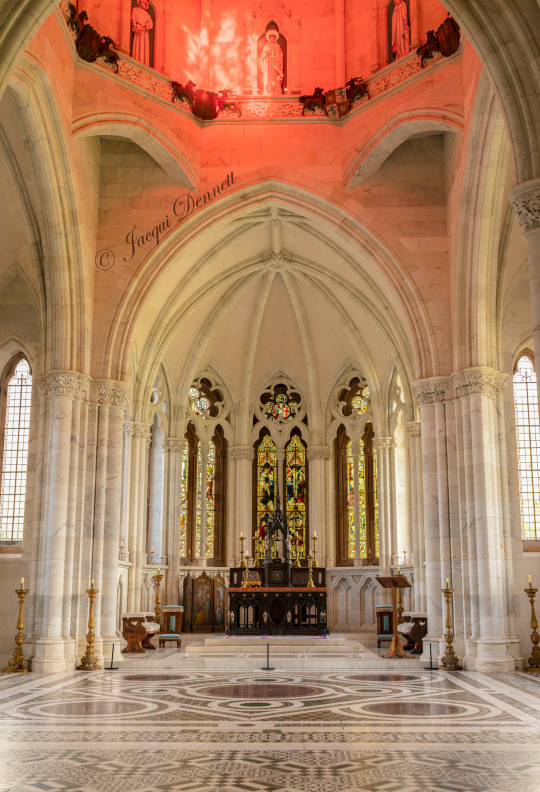
The chapel of Mount Stuart House
All the marble for the house was imported from mainland Italy / Scicily
The Chapel’s Cosmati flooring is typical of the architecture of Medieval Italy. The same style can be found in the Sistine Chapel and Westminster Abbey.
#hncphotoblog#hncphotography2022#hncphotography#location#mount stuart house#chapel#marble chapel#architeture
0 notes
Text
Mount Stuart


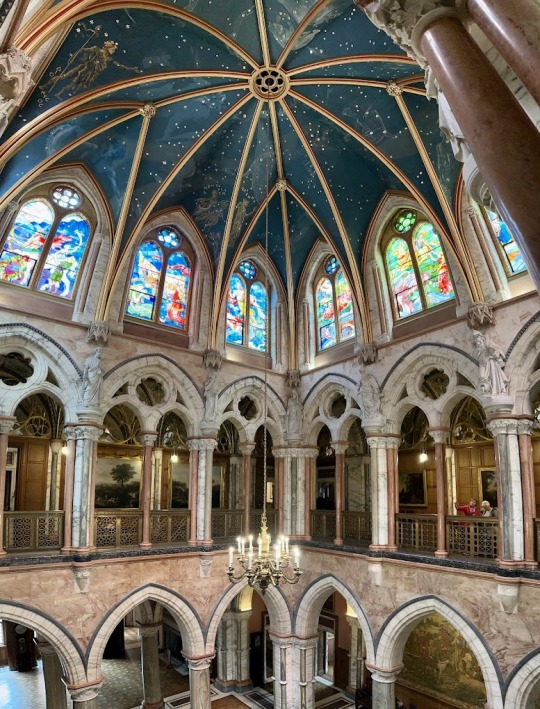
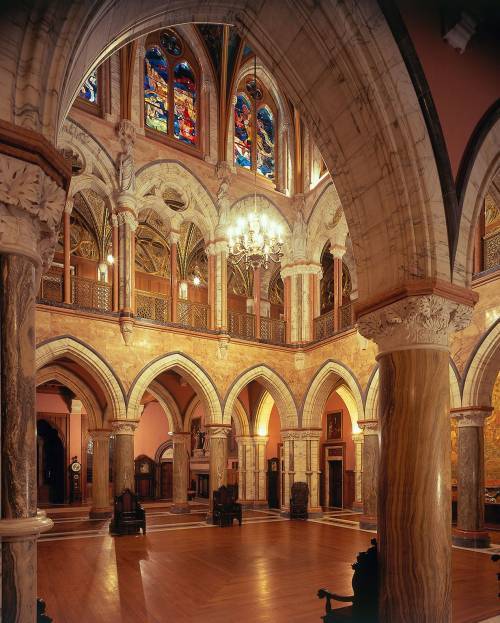
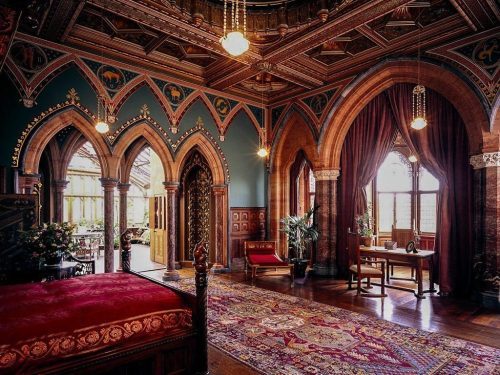
Mount Stuart is located on the east coast of the Isle of Bute in Scotland. The Gothic Revival country house was built in the 19th century. The house was built upon an earlier 18th century home severely damaged by a fire in 1877. The Georgian wings and much of the contents survived the fire and were incorporated into the new castle by the 3rd Marquess of Bute. The opulent interior boasts carved paneling, painted mirrors, a spiral staircase, a chapel, and much more. The Marble Hall has a map of stars on the ceiling and 12 stained glass windows depicting the signs of the zodiac moving through the seasons on the walls. The Gallery’s ceiling is decorated with winding branches from the Tree of Life, which frame the classical heads of 128 goddesses from ancient myth and legend. The house has collections of art and artifacts, including works by Ramsey, Reynolds, Gainsborough, as well as books, furniture, silverwork, porcelain, and Shakespeare’s First Folio. The estate has 300 acres of gardens that include a rock garden, a kitchen garden, an arboretum, and pinetums. The castle is used as a venue for weddings and corporate events. Mount Stuart can accommodate 37 guests in 22 separate areas around the house. There is a visitor center, a shop, and the Courtyard Café and Bakehouse.
21 notes
·
View notes
Text
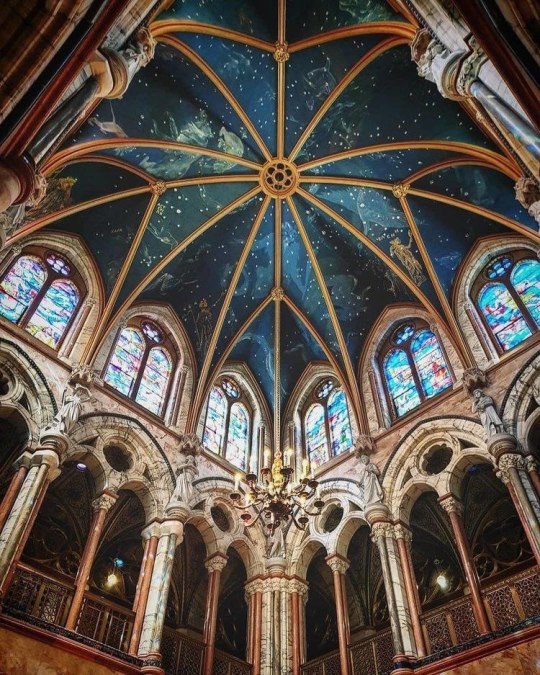
Mount Stuart House, Rothesay, Isle of Bute
#dark academia#light academia#academia aesthetic#classical#academia#escapism#classic literature#books#books and libraries#architecture#interior#royal core#cottage core#aesthetics#historical architecture
238 notes
·
View notes
Text


Brigadier General Hugh Mercer died on January 12th 1777 after being wounded at the Battle of Princeton.
Historians argue that, had it not been for his untimely and grisly death at the Battle of Princeton in 1777, Hugh Mercer, born in Aberdeenshire, would have been a greater leader than Washington and would rank as one of the greatest American heroes of all time.
Born on January 17h, 1726, at the manse of Pitsligo Kirk in Roseharty, Scotland, Hugh Mercer was the son of Reverend William Mercer and his wife Ann. At the age of 15, he left home to attend Marischal College at the University of Aberdeen to study medicine. Graduating as a doctor, he practiced locally until the arrival of Prince Charles Edward Stuart and the beginning of the 1745 Jacobite Uprising.
Rallying to the Prince’s colours, Mercer became an assistant surgeon in the Jacobite Army. He remained in this service until the Battle of Culloden. Mercer was forced to flee Scotland for America in 1747. Arriving in Philadelphia, he settled on the Pennsylvania frontier and returned to practising medicine. by 1758 he was, like many Scots who fled, serving in the British army, battling Shawnee and Delaware Indians, Mercer and his men took part in Lt. Colonel John Armstrong’s raid on Kittanning on September 8th, 1756. and became separated from his men. Alone following the battle, he made his way 100 miles on foot back to Fort Shirley where he received medical attention and was heralded a hero and promoted to the rank of Captain, it was here that Mercer was to become good friends with a man that would shape the remaining years of his life, also a Colonel at the time, his name was George Washington.
Before you start questioning his loyalty with being in the British army remember Washington was also in their pay at this time. After the 7 year war he settled back into private practice but 15 years later was elected as a Colonel of the Minute Men of Spotsylvania a Militia that would play an important part in the American Revolution, he had initially excluded from the elected leadership and branded a “northern Briton,” later being appointed Colonel in the Virginia Line part of the Continental Army which rose in revolt against British rule after the outbreak of the American Revolutionary War, once again he was fighting against “the auld enemy”.
One of the officers under Mercer was future president James Monroe. He rode through the ranks to Brigadier General distinguishing himself and involving himself with George Washington battle plans until January 3rd while on their way to The Battle of Princeton leading a vanguard of 350 soldiers, Mercer’s brigade encountered two British regiments and a mounted unit. A fight broke out at an orchard grove and Mercer’s horse was shot from under him. Getting to his feet, he was quickly surrounded by British troops who mistook him for George Washington and ordered him to surrender. Outnumbered, he drew his saber and began an unequal contest. He was finally beaten to the ground, then bayoneted repeatedly—seven times—and left for dead.
When Washington learned of the British attack and saw some of Mercer’s men in retreat, he himself entered the fray. Washington rallied Mercer’s men and pushed back the British regiments, but Mercer had been left on the field to die with multiple wounds to his body and blows to his head. (Legend has it that a beaten Mercer, with a bayonet still impaled in him, did not want to leave his men and the battle and was given a place to rest on a white oak tree’s trunk, while those who remained with him stood their ground. The tree became known as “the Mercer Oak” and is the key element of the seal of Mercer County, New Jersey.
When he was discovered, Mercer was carried to the field hospital in the Thomas Clarke House (now a museum) at the eastern end of the battlefield. In spite of medical efforts by Benjamin Rush, Mercer was mortally wounded and died nine days later on January 12, 1777.
In 1840 he was re-buried at Philadelphia’s Laurel Hill Cemetery. Because of Mercer’s courage and sacrifice, Washington was able to proceed into Princeton and defeat the British forces there. He then moved and quartered his forces to Morristown in victory.
The second picture show a painting entitled George Washington at Battle of Princeton features in the foreground Hugh Mercer lying mortally wounded in the background, supported by Dr. Benjamin Rush and Major George Lewis holding the American flag. This portrait is the prize possession of Princeton University.
16 notes
·
View notes
Photo
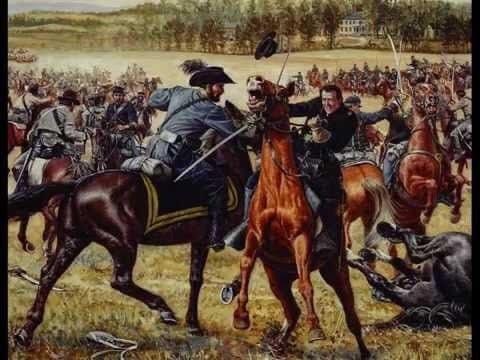
On This Day - June 9, 1863 – As the Army of Northern Virginia, under the command of General Robert E. Lee, started moving northward to take the war to the Union (a move that would eventually end at Gettysburg, PA), General J.E.B. Stuart was tasked to use the Confederate cavalry to screen this movement from Union scouts. But the Federals soon learned of a large rebel presence in area around Culpeper Court House, near a train depot named “Brandy Station.” Two Union cavalry corps, numbering some 11,000 men were dispatched as a “reconnaissance in force” when it clashed with Stuart’s 9,000 man mounted force. This set the stage for the largest cavalry engagement ever fought on the North American continent.
Perhaps the toughest fighting of the day occurred when the 6th Pennsylvania Cavalry collided with 10th Virginia Cavalry. In a scene reminiscent of a movie, there was a swirling melee as sabers flashed and dust was kicked up by injured and frightened horses. The 10th Virginia was about to give way when the 9th Virginia Cavalry galloped into the fray and caused so much damage to the 6th PA that it pulled back to regroup.
The type of combat experienced by these three units was repeated in numerous encounters over an area of several square miles as nearly 20,000 men and horses charged into each other much as waves clash onto a beach, only to recede to regroup and charge again. At the end of the day the Confederates held the ground but the Union cavalry, which up to this point in the war had proved ineffective against the rebels, held its own in most of the engagement. The number of Union dead was 852 while the Confederates lost 515 men. Thousands of horses were killed or injured and had to be destroyed.
https://www.facebook.com/KeepHistoryAlive
27 notes
·
View notes
Text
Which location was the most complicated to create and why?
There were two really – the China environment that opens the film and the Bhutan one seen in the third act.
We visited China on a location scout in 2019 – I was blown away by the amazing landscapes and knew that we would need to capture as much data and reference as possible to recreate them as digital environments surrounding multiple backlot set pieces.
The pandemic put our planned return to China permanently on hold. John Dietz at Bang Bang films in Beijing came to the rescue though, and worked with us to put together a shoot in three locations to capture what we needed for Framestore to build this complex environment. Dominic Ridley at Clear Angle Studios briefed John on the paths that he would need to fly a drone around the landscape to capture enough photographs, with consistent reference points to enable a photogrammetry reconstruction. On completion of the shoot the material was sent to Clear Angle back in the UK to process before delivering to Framestore. John also shot plates at different times of day on an Alexa LF mounted on a drone, which gave us an absolute reference point in creating the final shot work. Framestore used all of this data and reference to build the extensive environment surrounding the Qilin nesting spot – itself a fairly large backlot set.
One of the most challenging sections though was creating the bamboo forest which Newt runs though whilst having deadly spells fired at him by Grindelwald’s acolytes. The Art Department constructed a huge ramp on a berm at the studio which was covered in tonnes of soil and dressed at the edges with bamboo plants set in pots from the base to the top. This gave us a dense backing into the Hertfordshire night sky, meaning there was no need for elevated blue screens. The central channel of the ramp was left clear, save for smaller greens planted into the ground. This enabled both Eddie Redmayne and the camera to have freedom of movement as he ran down the slope – Framestore then added CG bamboo and other foliage around him in post, which added to the jeopardy as we were able to create near misses by actor and camera by careful placement of plants to camera in each shot.
Alistair Williams and his SFX team came up with an ingenious rig which involved shooting LEDs housed in shuttles down wires though the centre of the set – this gave us some fantastic spell light interaction as well as giving Eddie something to react to as they whizzed past him. Framestore matched these lighting cues with their CG FX spell blasts, splintering the digital bamboo. This is another great example of departments working together to great effect.
The Bhutan Eyrie, the location for the election that closes the film, was also a big challenge but for a different reason.
Stuart Craig had devised an imposing piece of architecture that would be seen atop a Bhutanese mountain – which we would be shooting on a combination of soundstage and backlot sets at Leavesden. We’ve always had the rule of shooting day exterior scenes outside, so the idea of filming a large chunk of the scenes on a stage-bound set concerned David, but again, working with Neil Lamont and George Richmond we came up with a solution that put his mind at rest.
Instead of wrapping the stage in blue screen, we instead had a painted backing surrounding the set which was painted in a gradient from top to bottom – darker at the base – as well as gradually going from a cooler sky blue to a warmer colour left to right to represent the late afternoon sky Digital Domain would be adding to the final shots. A huge silk hung below about 300 sky panels which bathed the set in a lot of light and bounce that did a great job of emulating a day exterior feel – especially once SFX had wet the entire set down and used their ‘silent wind’ system to constantly move the actor’s hair and costumes.
The base courtyard and steps were a large backlot set which became a useful reference in post at making sure the top courtyard had the same feel. George shot at the same stop and only in cloud cover when we were outside. Even as the dailies began to hit editorial you could see that we had a good match.
The Bhutanese landscape was based upon a shoot and capture we commissioned in Slovenia – Bhutan itself being closed due to the pandemic. The Locations team looked at a variety of options and the Triglav National Park looked like a good match for the Himalayan foothills we were attempting to recreate.
Jay and the Digital Domain team used this data to help build their environment which had to be painstakingly composited into hundreds of shots – our painted backing was fantastic in terms of making the lighting more authentic, but obviously added a lot of complexity for matte extraction. I think it was worth it though as the finished sequence looks so consistent and by being bold with how bright we made our skies versus the foreground, successfully emulated the exposure you would get if you were outside for real. Also the multiple layers of moving cloud and foreground atmosphere sweetened the shots further. David was very happy with the final result – our gamble and everyone’s hard work had paid off.
What was your approach for the final fight between Dumbledore and Grindelwald?
Though the script featured a climactic duel between Dumbledore and Grindelwald, it had to look like a dream, as in J.K. Rowling’s world they do not meet and fight until 1945, which was quite a way in the future of the two characters at this point.
After presenting David with several options of how we could present the duel, via previs and concept art, he felt we should lean more towards the feeling of the limbo Kings Cross world that Framestore had delivered for Harry Potter and the Deathly Hallows Part Two back in 2011. It felt like a language that the audience would understand and would also give more visual pizazz to this climactic scene.
We worked up a previs to work out the more conceptual parts of the action – the central conceit being that the duel takes place in the time that the breaking Blood Troth pendant falls from Dumbledore’s arm to the floor… in a blink of the eye for the rest of the characters. We shared the previs with Rowley Irlam, the Supervising Stunt Coordinator, and his team and we were able to present David a hybrid edit of previs and stunt vis.
We shot the main action on the Eyrie set – the set up in place there enabled George Richmond to change the lighting on cue to something much brighter and more ambient to reflect the more ethereal digital set that Digital Domain would be creating. All of the action on the Eyrie was also shot from a four point wire cam which enabled us to repeat moves where we needed to shoot multiple passes of Mads and Jude for the moments where their characters apparate to avoid a deadly spell to two.
Jay Barton and Digital Domain soon got into the postvis for the sequence – with Image Engine looking after the Blood Troth work. Getting the shots into the cut early helped to drive the edit and understand what David wanted to see from the spells – the main brief being that they should look as deadly and kinetic as possible. To this end, once the postvis was delivered we experimented with making the environment much darker, to echo the Dark Mirror World environment seen during the Credence Dumbledore duel on the Berlin streets – the thought being that this would make the spells contrast and punch out more. However, once seen as a whole David felt that the FX overwhelmed the emotion of this important moment between the two Wizarding heavyweights so we reverted to the White World look – we also added glimpse of this white limbo look in the dream tea room scene that opens the film to foreshadow the duel.
Jay had his team come up with multiple options of how to light and shade the set – we didn’t just want it to look like a grey shaded version of the hero environment. We settled on an almost crystalline look with lighting inside some parts of the set, that once combined some FX atmosphere as well as comp diffusion and lens aberration, gave us the dream-like feel that David was after. As spells are loosed, the architecture smashes like glass rather than becoming rubble – this was to add to the surreal dream-like feel and to echo the destruction of the blood troth.
For the spells themselves we were referencing physical things like angle grinder sparks as the spells clash, and of course we looked at the duels from the Harry Potter films so that what we were doing fit into the established universe. The molten spell that Grindelwald and Dumbledore conjure and push toward each other was an example of this – whilst feeling lethal and as and as physical as possible, which was really important to David. The finishing touch was to add the Blood Troth falling in extreme slow motion as it cracks and is eventually destroyed. Jeremy Mesana at Image Engine helped finesse this moment as David and Editor Mark Day were very specific about how fast it fell and spun in each shot we saw it in across the sequence. When it finally hits the floor we wanted it to have a sense of scale much bigger than you would expect from a small pendant to really amplify what a big moment this is for the relationship between Dumbledore and Grindelwald. There’s some really lovely work in this duel and I think the final result really paid off the work that everyone put into it and the film as a whole.
Did you want to reveal to us any other invisible effects?
There were plenty of shots in the film that exhibited hopefully ‘invisible’ work VFX-wise, or at least surprised people to find out were so VFX driven such as the One Of Us set extensions in the Tea Room and Hogwarts or the CG arm that Image Engine gave Dumbledore so that a chain could more authentically constrict him as he is tortured by the Blood Troth in one scene in Hogsmeade.
The best example of truly invisible work though is Queenie’s wedding dress in the closing scene of the film. The original concept was for the dress to have butterflies on and around it that would form the veil and train. Costume Designer Colleen Atwood created a wonderful dress and we decided it would be great to have some practical butterflies cut from different types of fabric, sewn into the costume to which we could add CG ones taking off, landing and flying magically around Queenie’s head – again to assist the digital join. Because of the planned CG work we captured every detail of the dress, which in retrospect was good planning. Once David and Mark cut the scene together they felt that the planned VFX insects would rather take away from the subtle emotion of the performance between Dan Fogler and Alison Sudol. The challenge now was to remove the practical butterflies from the dress, as they no longer made sense without their CG compatriots. I spoke to Oliver Schulz and the RISE team and because of the way they were embedded amongst folds within the sheer material of the dress, the best approach was to replace the dress entirely with an identical CG version minus the Butterflies. It was one of those moments you always hope for when I showed David the first work in progress version – nobody in the room could point to what work had been done. Oliver and the team had done a stunning job. Dan Fogler, as Jacob, ruffles his hands though the shoulders of the dress in a shot which lasts for about 40 seconds – there was nowhere to hide but the fidelity and the detail in the cloth simulation let alone the body tracking was amazing. Nobody would ever know – which is the definition of the perfect Visual Effect.
Which sequence or shot was the most challenging?
There were two really that we haven’t discussed so far.
First was the Credence Dumbledore duel on the streets of Berlin. This was the first time that we would see Dumbledore in action, in his prime so it needed to be visually spectacular. At the same time we didn’t want to explain why none of the Muggle Berliners could see two Wizards Battling each other, let alone having to clear up the mess afterwards.
Working again with David and Giles Asbury, we threw around a lot of ideas. Through a mixture of reference, from my own Instagram photography of puddle reflections on walks with my dog, to the work of Surrealist artists such as Magritte, we landed on the concept that the whole sequence would take place within a magical illusion of Berlin that Dumbledore creates. At the head of the scene we follow an enchanted water droplet into and through the reflection of a shop window and from that point everything plays flopped, as if reflected. After Credence unleashes his Obscurial magic ripping apart the city, Dumbledore reveals that all might not be as it seems, and with a flick of his deluminator literally melts the surrounding architecture away leaving a black void where the ‘real’ Berlin appears in the reflections of windows and puddles on the floor.
Having worked up several versions of boards we moved into previs with Stewart Ash, James Burr and the Third Floor team where we further developed this concept as well as all of the action. One particularly challenging shot that evolved in previs was at the tail of the scene, where the camera jibs and rolls 180 degrees through a puddle from the dark void world back into bustling Berlin. It looked great but we were unsure how we’d pull off the shot for real – but this is a good example of what I enjoy about VFX and film making – coming up with a cool idea and then working with everyone to realise it.
To visualise the lighting in the dark void work we employed Theo Groeneboom and his team at Rebel Unit. They used shots from our previs to render various real world lighting scenarios with the main brief of lighting the world purely from the daytime reflection of the puddles and windows. I shared these with George Richmond before showing to David who loved the look.
To achieve this practically the Art department worked with George and his team to create a large light box that we could stand the actors on with simple cut out stencils to create puddle shapes. The set was surrounded by black drapes and George used a bank of sky panels to create a subtle key and bounce to give some more shape and fill to the actors’ faces. Martyn Culpitt and his team at Image Engine then began their work – which was considerable. The dark void section of the sequence alone relied on a full CG environment of Berlin including crowd and vehicles, as well as high resolution digidoubles of Credence and Dumbledore to be seen in the reflections of the CG puddles, which of course also required FX situation for the water interaction of the characters plus the vehicles driving through them on the reflection side. That’s before we got into the Obscurus magic FX Credence is unleashing on Dumbledore, layers of atmosphere and a Phoenix, provided by Framestore’s London team. In a couple of shots as Credence is thrown backward by Dumbledore, before being lowered gently to the puddled floor, we needed to replace Ezra Miller’s body with a digital version as on the shoot his coat kept getting tangled in the stunt rig. The only thing real in these shots are Ezra’s face and hands but without the on set lighting, the stunt work and all of the visual development that went on in pre-production, the finished shots wouldn’t look as beautiful as they do. Also, as a VFX Supervisor on set, I now have confidence that we’ll deliver great looking work because of all of that planning, as well as being lucky enough to work with such talented artists as Martyn and his team.
Arnaud Brisebois and Rodeo had a very different challenge in creating a magical storm of cutlery, crockery and lobsters tearing apart the Grand Hall of the German Ministry of Magic around our heroes Lally and Jacob.
This was another sequence that we worked up in previs. David really liked the idea of Lally turning her book into a bridge over which she and Jacob run to safety – proving that reading is good for you!
On set we pulled out some of the tables and chairs and replaced them with a ramp covered in soft mats for the actors to run up – this methodology meant that they did not have to be held by safety wires and the spongy surface underfoot had the same sort of give that our paper bridge would. However, there was a massive amount of clean up to do.
Rodeo completed a build of the entire room and all of the furniture which enabled the ramp to be seamlessly replaced by digital set extension. Not only that – during production we had prop-scanned everything in the room, every glass and plate down to bread rolls and sticks of asparagus. All of these individual items were then built as digital props enabling us to lift everything off of the tables and into the magical vortex spinning around a befuddled Jacob. During filming we removed the physical props in stages as the scene progressed – by the end slates of the sequence, two thirds of the tables were clean, save for some tape tracking markers, and our ramp in place. There was of course also a huge amount of SFX wind to blow costumes and hair for real.
The really tough thing here was trying to create some sense of story and escalation through the scene with so much flying around. Postvis played an important role in building an overall layout for each shot with lower resolution assets and a more generic FX set up. We had shot the storm shots at 146fps and most shots ran at that native speed, though Mark Day sped some up once our postvis was in to add bursts of dynamism to Jacob’s journey. As well as determining frame rate, the postvis also showed that we needed to add a couple of full CG shots to show the book bridge being formed.
Arnaud and the team came up with a few layouts for the bridge and David loved the first version I showed him – it had some structural sense but had the sense that it could fall apart at any moment which upped the peril.
In building the final shots Rodeo were able to add or remove single items or pieces of paper from the bridge – it was a difficult balance to create mayhem but make sure that we could still focus on the two lead characters.
Combined with an FX cloud with CG rain bouncing off the cast and furniture, massive magical moving paintings which were replaced to allow them to swing in the wind, a falling chandelier disintegrating as it hits the floor, spells wrapping around stunt aurors flying through the air and a pyrotechnic spell setting fire to the book bridge and pages, the final sequence looks spectacular.
Like the Berlin duel it was fantastic to see a plan come together with lots of people working together at the top of their game.
#fantastic beasts#secrets of dumbledore#christian manz#newt scamander#albus dumbledore#gellert grindelwald#credence barebone#queenie goldstein#jacob kowalski#jakweenie#fb3interview
14 notes
·
View notes
Photo
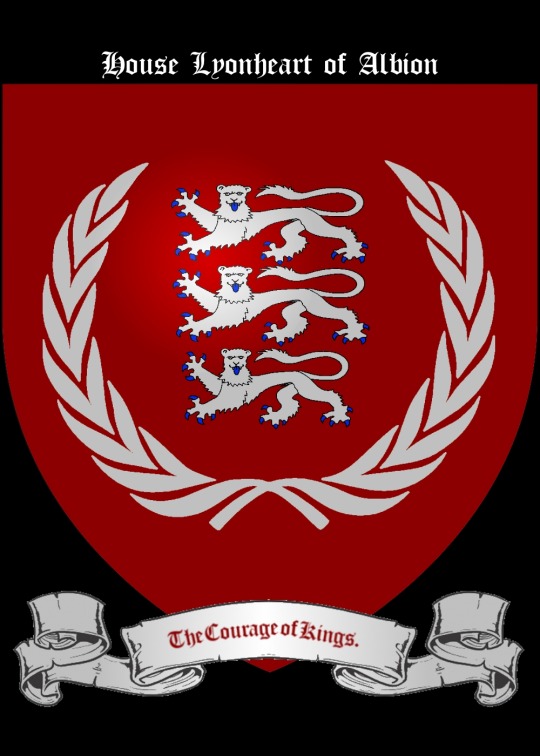
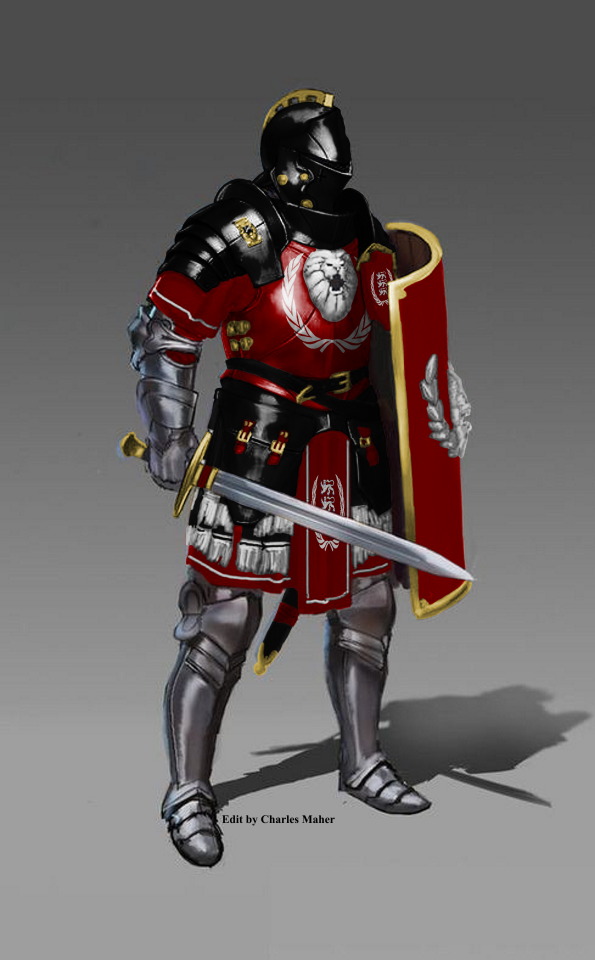
My new, sixth illustration of a fantasy knight I retouched to feature the colours and faction iconography I designed for House Lyonheart, the current and reigning dynasty of Kings of Albion in my medieval fantasy world. Both this artwork and it’s associated faction iconography were designed for a low-fantasy setting of my original conception with technology and material culture roughly equivalent to the late medieval and renaissance periods of European history. Where formations of heavily armoured and mounted, aristocratic knights in either suits of full plate armour or heavy coats of chainmail fight alongside professional armies of pikemen and matchlock musketeers. Where medieval-style stone castles are gradually being outsourced in favour of both lavish, sumptuous country estates and devoted military fortifications, or “bastions,” due to the technological advancements made in gunpowder-based, siege artillery. And where fledgling nation-states, most notably in the form of kingdoms and empires begin to look beyond the great oceans and the frontiers of The Known World in search of even greater wealth and territory.
In context to the canon lore of my low-fantasy world, House Lyonheart is the reigning, dynastic house of constitutional monarchs over The Island Kingdom of Albion, a fantasy kingdom loosely inspired by The Kingdom of England under The Lancaster, Tudor, and Stuart Kings during the late medieval to early modern periods of English and European history, while also drawing fantastical sources of inspiration from “Ulthuan,” or the land of The High Elves in Warhammer Fantasy as well as The Kingdom of The Westerlands in Game of Thrones. Unlike the overwhelming majority of nation-states based on the mainland of “The Civilized World,” as rigidly defined and interpreted by both the clergy of The Conservative Church of The New Gods, as well as the nonconformist preachers of the myriad “Reformed” and “Dissenter” Churches of The New Gods, The Kingdom of Albion under the dynastic rule of House Lyonheart has embraced a limited form of consensual government known as “constitutional monarchy,” where the executive, legislative, military, fiscal, and religious powers of House Lyonheart as the longtime and reigning dynasty of Kings of Albion have been subjected to the rule of law, as well as bounded by the consent of Albionic “parliament,” a bicameral legislative body invested with the powers of raising and passing state legislation as well as the levying of taxes with or without the consent of The Kings of Albion. Albionic Parliament as the national, legislative body of The Kingdom of Albion consists of both an upper “House of Lords” containing representatives of the greater and lesser houses of feudal aristocracy and nobility within The Kingdom of Albion, as well as representatives of both the ecclesiastical and monastic clergy of The Conservative Church of The New Gods as the official, state-sanctioned religion of The Kingdom of Albion, as well as a far more recent, lower “House of Commons” containing representatives of the country gentlemen, the bourgeoisie, and the merchant guilds with The Kingdom of Albion. The House of Lords as the upper, senior house of Albionic Parliament came into existence following a baronial revolt against Edward Shortsword as 31st King of Albion and former head of House Lyonheart following the calamitous and failed wars of Aquitainian Succession to usurp House Williamson as the lawful and legitimate Kings of Aquitaine and the subsequent drafting of “The Magna Rhetra” as a codified constitution governing the various bodies of Albionic Common Law that were first codified by Albionic court scribes and clergymen under the reign of Artorius the Lyonhearted as the culturally Southern Aquitainian grandson and heir apparent to Hengist Skullsmasher, the first King of Albion and Founding Head of House Lyonheart. The House of Commons as the lower, junior house of Albion’s parliament, by contrast, came into existence following a massive peasant uprising against Robert III as the 40th and late King of Albion and former head of House Lyonheart after a decade of brutal, extortionate taxation levied to in order to pay for the king’s ransom imposed by House Williamson as The Aquitainian Monarchy after his defeat and subsequent capture in The Battle of Tourangeau at the hands Prince Tancred Williamson Duc de Chambord in the wake of the last great Albionic Invasion of Aquitaine.
Although born of House Lyonheart’s disastrous and failed wars against The Kingdom of Aquitaine, both the constitutional monarchy and parliamentary houses of legislation that distinctly characterized the government and society of The Kingdom of Albion under the rule of House Lyonheart has resulted in a fairer, more consensual political and social system that has protected the subjects of The Kings of Albion from the brutal economic recessions and extortionate taxation that became synonymous with the perpetual warfare, cutthroat political intrigues, and brutal religious upheaval that characterized the kingdoms and empires based on the continental mainland of The Civilized World, whose hereditary monarchs and princes universally aspired to the model of House Williamson and The Kingdom of Aquitaine as the “paragon,” “exemplar,” “ideal,” or otherwise “gold standard” of a strong, powerful, and prestigious, prolific, and illustrious absolute monarchy who had finally achieved the centralization of their kingdom into a proper nation state through their ancient, carefully cultivated and manicured political alliance forged with The Conservative Church of The New Gods based in The Holy Sept in Romulus as the official, state religion of The Kingdom of Aquitaine, as well as their gradual pacification of the legislative and military autonomy of the great houses of feudal aristocracy through the superimposition of “Aquitainian Parlements,” or “royal law courts,” over the historic regions of jurisdiction of both the feudal, aristocratic legal customs and traditions of Northern Aquitaine, as well as the old Cosmopolitan, Classical Romulan law codes of Southern Aquitaine left over from the days of “The Romulan Empire” or “The Empire of Mankind Primus” during the long forgotten epoch of “Classical Antiquity” within the long and storied history of “The Civilized World.” As well as using the power and authority of “The Aquitainian Parlements” to organize a national, professional, state funded “royal” army at the expense of the feudal, private levies of the great houses of nobility and aristocracy within The Kingdom of Aquitaine.
Due to the executive, legislative, military, fiscal, and religious restrictions imposed on House Lyonheart as the hereditary, dynastic Kings of Albion through the combination of the unique political and social system of constitutional monarchy and parliamentary legislature, The Kingdom of Albion under the hereditary rule House Lyonheart has remained relatively aloof from the perpetual warfare, cutthroat political intrigues, and brutal religious upheaval that came to characterize the aspiring absolute monarchies based on the continental mainland of The Civilized World. However, under the reign of Edmund IV as the 41st and reigning King of Albion and the current Head of House Lyonheart, The Kingdom of Albion has been officially declared both a political and religious asylum for religious subscribers to The “Reformed” Faith of The New Gods derived from the theological reforms preached and published by Karl Von Luxembourg at Die Universität Wörtzburch in The Empire of Mankind, as well as religious subscribers to any of The “Dissenter” Faiths of The New Gods that either directly or indirectly descend from The “Dissenter” Theology of the Aquitanian vagabond and theologian Cassyon Dufresne as originally preached in “The Cathedral of Les Œillets” in “The Borderlands Confederacy” of culturally “Austere” or “Northern Imperial” states strategically situated between Der Reichstaat and Die Markgrafschaft Brannenborg within The Empire of Mankind. Despite The Kingdom of Albion’s international status as a political and religious asylum for all religious subscribers to both the multitude of “Reformed” and “Dissenter” Churches of The New Gods fleeing from religious persecution and marginalization at the hands of religiously Conservative monarchs and aristocrats, the fourteen year old Edmund IV as the 41st and reigning King of Albion and the current Head of House Lyonheart has already been officially proclaimed as “Defender of The Faith” by elderly Archpatriarch Vexillarius IV as the 299th and reigning Bishop of Romulus and the current Head of The Conservative Church of The New Gods for his written thesis’ openly condemning both the theological reforms of Karl Von Luxembourg as the leading and titular “Great Reformer” to The Conservative Church of The New Gods, as well as Edmund IV’s own maternal grandfather Friedrich I, “Der erster und herrschend König von Middenland” und “Der Gründungschef von Hohenrotbart” and Albrecht Von Biermann, “Der herrschend Markgraf von Brannenborg,” “Der momentan Chef von Hohenbiermann,” und “Kurfürst Des Selbst Kaiserreich der Menscheit” for their actions in officially confiscating the lands, property, and treasuries the ecclesiastical and monastic clergy of The Conservative Church of The New Gods based in Das Königreich Middenland and Die Markgrafschaft Brannenborg, respectively, as the first and second hereditary, dynastic rulers in both the recorded history and the enormity of The Known World to officially renounce The Conservative Faith of The New Gods in favour of The Luxembourgian Reformation on behalf of both their houses and subjects.
Outside of his affairs concerning the religious upheaval surrounding both Karl Von Luxembourg’s and Cassyon Dufresne’s respective reforms to The Conservative Church of The New Gods on the continental mainland of The Civilized World, Edmund IV as 41st and reigning King of Albion and Current Head of House Lyonheart has used the restrictions on any continental military, political, economic, and religious ambitions in The Civilized World imposed by The Kingdom of Albion’s unique system of constitutional monarchy and parliamentary legislature to develop a new, and enduring policy of overseas colonialism and mercantilism devoted to the production and acquisition of luxury goods and natural resources by granting legally exclusive “letters of marque” or “colonial charters” to “trade companies” of merchants, traders, and professionals willing to use their own capital to establish trade posts and colonies in overseas trade theatres in order to export luxury goods and natural resources harvested and produced in “virgin lands” back to The Kingdom of Albion in return for generating a handsome profit from their corporate ventures. In addition to being granted legally exclusive monopolies over certain trade theatres with these “letters of marque” or “colonial charters,” these “trade companies” created by the 41st and reigning King of Albion and the current Head of House Lyonheart would also be given unrestricted political and military autonomy over any acquired and developed colonies and territories established in overseas trade theatres, with the most prominent and lucrative Albionic colonial possessions being established by “The King’s Landing Trade Company” in “New Albion,” and “The World’s End Trade Company” in “Arcadia.” To accommodate his ambition of colonialism and mercantilism, Edmund IV as the reigning King of Albion and the current Head of House Lyonheart has diverted The Kingdom of Albion’s annual, national budget in favour of a powerful, professional, state-funded “royal” navy over a strong standing army, in contradiction to the traditional and historic policy of all historic Kings of Albion before him, and to “subsidize” or otherwise “invest in” the business and industry of trade guilds devoted either to the construction of seafaring vessels or the production of maritime goods and resources on an industrial scale, as a means of bolstering both his ambitions to develop The Kingdom of Albion’s mercantile trade through the establishment of overseas colonies and territories in different trade theatres, and to give his growing professional navy the necessary assets and resources needed to secure the maritime trade lanes established between any overseas colonies and territories with The Kingdom of Albion.
In terms of The Kingdom of Albion’s standing military left over from Robert III’s failed war with House Williamson and The Kingdom of Aquitaine, the infantry regiments serving in the national, professional, state-funded “royal” army of House Lyonheart and The Kingdom of Albion oddly continue to employ peasant levies of billmen and longbowmen in an age when the overwhelming majority of fledgling nation-states and their ruling, dynastic houses based on the continental mainland of The Civilized World have moved on to employing professional regiments of pikemen and matchlock musketeers as the line, core, and bulk of their campaigning armies. Although, like the overwhelming majority of continental, mainland states of The Civilized World, The Kingdom of Albion under the constitutional monarchy of House Lyonheart has fully embraced the employment of gunpowder-based, siege artillery that is so inherently vogue of the current epoch of the post-chivalric battlefields of The Civilized World, fully displacing it’s outdated arsenal of classical and feudal-style windlass artillery pieces such as catapults, trebuchets, ballistae, mangonels, and onagers that have been both historically and traditionally employed on the battlefields of The Civilized World since the days of the Classical Mycaenean “Poleis” or “city states” that once flourished during the long forgotten epoch of “Classical Antiquity” in recorded history of The Civilized World. Despite the seemingly antiquated military technology and tactics employed by the billmen and longbowmen serving in the traditionally strong, standing army of The Kings of Albion. The mixed formations of Billmen and Longbowmen employed personally by House Lyonheart as the constitutional monarchs to The Kingdom of Albion are completely and perfectly capable of holding their own line against the more professional, pike and shotte infantry regiments employed by continental powers in The Civilized World such as Le Royaume d’Aquitaine, Das Königreich Middenland, and Die Markgrafschaft Brannenborg.
#coats of arms#heraldry#shields#medieval#renaissance#chivalry#knights#plate armour#painted armour#black armour#blackened plate#gilding#swords#scuta#fantasy#fantasy world#graphic design#art#Robert III#Edmund IV#Kaitlin Lyonheart#Edward Fitzroy
4 notes
·
View notes
Text
Thursday 6 August 1835
8 10
12
no kiss bit last night caught two bugs on A- this morning told Lady S- and V- yesterday morning of the table I had seen at Howell and James’s and asked them to go and look at it - they liked it very much but recommended a workbox the one at 9 guineas - Lady S- would not hear of the table - far too much to give - so said V- but the table beautiful - enough - determined to give it without more ado - Had Hutton the tailor at 9 to alter the fit of A-s’ habit and shorten the skirt - Lady Georgiana Fane considered the best rider - St George’s riding school (near the park?) considered the best - recommends Ashmead, 6 mount street, Berkley square for travelling caps - wrote the following to ‘the honourable Miss Stuart 3 Carlton terrace’ to be put into the table - ‘my dear Charlotte I am delighted to have seen you so happy - among the various forms of congratulation that are pouring in upon you, I have certainly not chosen the most portable - but may it be useful, and may it now and then remind you of my affectionate interest in your welfare, and that I hope to see you even happier some years hence, than you are now - affectionately yours. A Lister 26 Dover street Thursday morning’ - had thought last night what to write and composed the latter half of the above while dress this morning post horses again and A- and I out at 10 ½ to 1 ½ - drove immediately to Howell and James’s bought and paid for the table put the above note into it - it was to be done up and cleaned and sent in the curse of 3 or 4 hours - then to Colnaghi’s and then the trouble of the world (our postboy not knowing London and John (Clarke) being raw and dull) to find Baldwin’s gardens (Gray’s Inn Lane) where we expected to find the central national school - a dirty place - a mere parish national school shortly to be given up being too expense - the school master and mistress (man and wife) have £110 a year salary allowed - Mr and Mrs Edward Trot - she on hearing our errand caught at it, and would be glad to be engaged - both of them looked dirty particularly the wife - he might have done for us - but did not like the look of her without cap - glad to get away - then drove to the Herald’s college St Bennets’ hill near St Paul’s - much difficulty to find it - our postboy knows nowhere - the entrance in a narrow street - very bad turning into the cour - 2 officers of the college there ready to answer inquiries - the one who was chief speaker who gave his address and to whom we are to write (gave my own address) was ‘Mr Rogers Harrison Herald’s college Doctors commons’ - began by asking my own pedigree hoped that Mr Radcliffe their Rouge Croix had done all right - his [?] conduct had alarmed his friends in the north - yes! all right but the deaths should be entered - I must write and give the dates, and sign in verifications of the same on my next coming to London - asked Mr Harrison to make out the connection with the Ribblesdales and any other connection he could - then asked about the arms of Walker and set A- to work - the arms borne by the W-s of Waterclough argent a chevron sable changed with 3 garbs or not be found under the name of W- but the Crownest W- arms evidently the original arms of W- varied in many ways - A- to make out what she can and send it to Mr Harrison - thought she could connect herself with a Thomas W- registered in the college as having purchased arms, being of Bow near Stratford Middlesex in 1714 - arms granted 28 January that year - home at 1 ½ - John dined - I sat musing what to write to Lord Stuart de R- about the treasury order - then determined to write nothing till I had seen Mr Bewsher and learnt what it would be best to write - dozed and slept till A- and I out again at 3 - drove about shopping - went to the furniture bazaar adjoining the house and carriage bazaar) in Baker street - the furniture part all in the hands of one person or one firm - ready money cheap but not thoroughly good? furniture pays 15pc from France - then to Pantheon a new bazaar in Oxford street - very handsome - the pillars and arcades painted on canvass à l’Italienne Mr Harper proposed doing as my great room at Northgate - the effect very good but great care required I see, in stretching the canvass tight enough - see a few undulations in it in some lights - Smirke was the architect - a magnificent room for the purpose - entered from great
SH:7/ML/E/18/0076
Blenheim? street by a handsome conservatory - picturesque rooms - a good slight sketch by Turner the style of which we were taken with - very large - magnificent pile of building for the purpose - Ensor the druggist in Oxford street had just before told us the things sold there were of inferiority quality so the speculations would not eventually answer - home at 6 ¾ - dinner at 7 - tired - asleep all the evening till 11 - A- asleep too a little while then writing a little - no tea - very fine day - very hot - F72° in my dressing room at 11 ½ pm
3 notes
·
View notes
Text

The opulent Mount Stuart House on the Isle of Bute was unexpected. Recommended by the locals as a must see. Found out that this pleasure palace belonged the to Marquesses of Bute. The same family that used to live at the Cardiff Castle in Wales. The interior is just as whimsical and beautiful like Cardiff Castle. A lot of referrals to astrology and mysticisms. This is seen through its tinted-glass windows and symbolism in its architecture. The chapel within Mount Stuart House is white marble
#original photography#australian photography#photographers on tumblr#australian photographer#original photographer#travel photography#nature#travel#travel blog#Mount Stuart House#Isle of bute#Scotland#UK#architecture#gothic architecture#Marquesses of Bute#opulence#history#astrology#whimsical#white marble
4 notes
·
View notes
Text
A SUCCESSFUL CALAMITY
1940

A Successful Calamity is a two-act comedy by Clare Kummer first produced in 1917.
Clare Beecher Kummer (1873-1958) was the great niece of American writer Harriet Beecher Stowe (Uncle Tom’s Cabin). In addition to being a playwright (mostly of comedies), Kummer also wrote music and lyrics for the theatre. Perhaps her most successful play was Her Master’s Voice (1933), which was filmed in 1936 and was twice made for television.
The entire play takes place in the Wilton home in New York. In it, a wealthy industrialist (Henry Wilton) tests the loyalty of his spoiled children and selfish wife by pretending to be broke.

The original production opened on Broadway at the Booth Theatre on February 5, 1917. Produced by Arthur Hopkins, the cast featured William Gillette (Kummer’s cousin) as Henry Wilton and Estelle Winwood, as Emma Wilton. It ran 144 performances. The play took the summer off and returned on October 10, 1917, this time at the Plymouth Theatre (now the Gerald Schoenfeld).
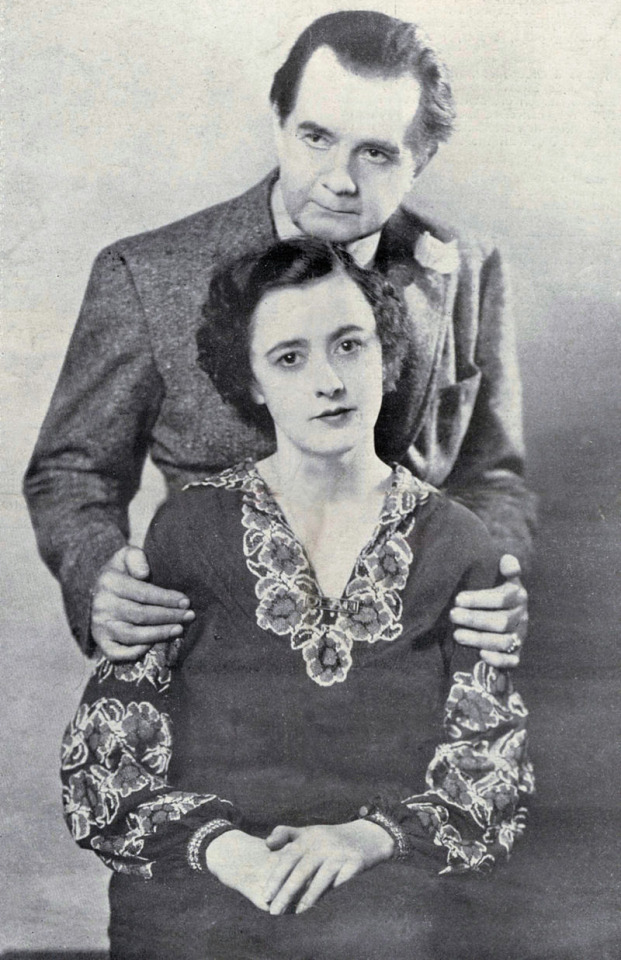
In February 1934 there was a revival at the Cherry Lane Theatre (now considered off-Broadway) starring Paul Gilmore as Henry and his real-life daughter Virginia Gilmore as Emily, Mr. Wilton’s daughter. In addition to owning and managing the Cherry Lane Theatre, Mr. Gilmore also produced and directed the production.

A new production of A Successful Calamity opened in Atlantic City at the Garden Pier Theatre on July 29, 1940. It starred Walter Hampden, dubbed ‘the first gentleman of the stage’. By 1940, the Garden Pier Theatre was one of the last legit venues in Atlantic City to be programming live theatre, albeit only in the summertime. Instead of new plays, the Garden Pier presented established Broadway hits with name stars aimed at vacationers.

This was Hampden’s Atlantic City debut.
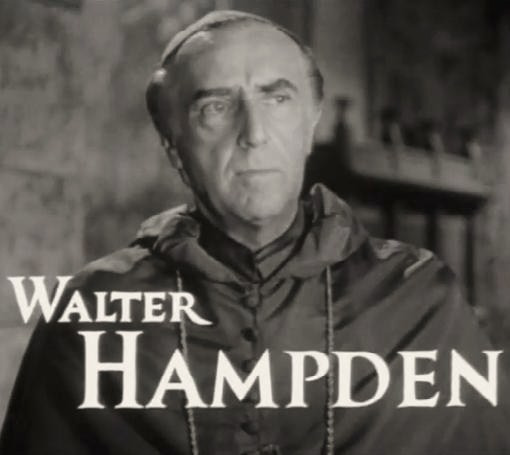
Walter Hampden (1870-1955) was a classically-trained actor who had played Hamlet three times on Broadway. In 1925 he took over management of a vaudeville house on Upper Broadway, and renamed it Hampden's Theatre. Hampden was president of the Players' Club for 27 years. He was nominated for a Primetime Emmy Award in 1952.

The production was supposed to kick off in Mount Kisco NY on July 15, 1940, but postponed due to Hampden’s film work in Hollywood. Instead, it began on July 23rd at the New Brighton Theatre in Brighton Beach, NY.
“What was sharp and up-to-the-minute in '17 seems to need a shot in the arm in 1940. Little comedies like this should trot along briskly but last night, particularly in the first act, the cast frequently seemed to be dragging it along by the halter.” ~ ROBERT FRANCIS, BROOKLYN DAILY EAGLE
Hampden’s supporting cast included: Mildred Baker, Alexander Campbell, Arthur Tell, Norman Stuart, Robert Kerr, Henry Mawbray, Harry Neville, Arden Young, Tamara Choate, and Florence Young. David Leonard directed the production.
In November, Hamden and the production launched an extensive tour of the Southern States starting in Hagerstown MD. During the tour, Hamden was also appearing on movie screens in Cecil B. DeMille’s North West Mounted Police, alongside Gary Cooper and Lon Chaney Jr.

In 1932 a feature film adaptation was released starring George Arliss and Mary Astor.
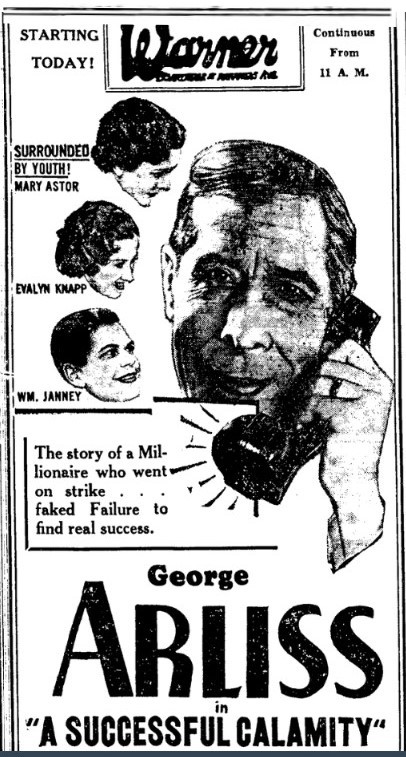
The film opened in Atlantic City at the Warner Theatre on the Boardwalk on September 17, 1932.
#A successful scandal#Clare Kummer#1940#Walter Hampden#Atlantic City#Garden Pier Theatre#Broadway#Broadway Play#Cherry Lane Theatre#Paul Gilmore#William Gillette#George Arliss#Mary Astor#Harriet Beecher Stowe#Estelle Winwood#Theatre#Stage#Play
3 notes
·
View notes
Text
The AM: December 11, 2023

After some initial cosmic digressions, it's a more guitar-forward episode of the AM, particularly in the last half, with dreamy tunes from Lush, the Haiduks, the Amazing, Ultimate Painting and more. Plus the story of a Christmas weed, and bright vibes for a dark winter day.
Listening links:
CJSW
Soundcloud
Spotify playlist
Hour One:
ekki hugsa
Ólafur Arnalds • It's 2am and I'm Not Tired
Pulse at the Centre of Being - Mor Elian Remix
Max Cooper • Unspoken Words Remixes III
Hungover and Late
Richard Reed Parry, featuring Stuart Bogie, Andrew Barr • Eileen OST
Sundogs
Mount Maxwell • Littlefolk
In the Soil
Various Artists, featuring Hermeneia & Zaumne • Always + Forever
Space Pop
Lars Deutsch • Boum Dans L'Espace
Nordlicht
Kosmischer Läufer • Volume Five
Airwaves
Kraftwerk • Radio-Activity
Dream Rain
Stilz • Single
Pure
Rich Aucoin • Synthetic: Season 2
Hour Two:
The Great Wave
Tristan De Liége x Jambal • Enterprises of Great Pith and Moment
Penthouse in Pernambuco
ATA Records • The Library Archive, Vol.3
Crescent Blade
The Budos Band • Frontier's Edge
Fried Neck Bones And Some Home Fries
Willie Bobo • Uno Dos Tres 1•2•3
For Free
Rogér Fahker • East of Any Place
Never the Bride
Raf Wilcot • Cinnabar Bouquet
Breathe Again
Dada Plan • A Dada Plan Is Free
Who’s the Thief???
Dada Plan • A Dada Plan is Free
Only the Lonely Know How
MOONRIIVR • Vol. 1
Dos Pasajeros
Melenas • Ahora
I Can’t Speak
La Luz • Weirdo Shrine
Shapes
Bong Wish • Hazy Road
Things I Hold
Knife Pleats • Hat Bark Beach
Cheerleader Coldfront (Guided By Voices Cover)
Lab Coast • Cover to Cover
Hour Three
Stop Trying (jubilant reprise)
siskiyou • Not Somewhere
Plain As Your Eyes Can See
Various Artists, featuring Acetone • Light in the Attic & Friends
Ten Street
Ultimate Painting • Ultimate Painting
Shelter
Alice Phoebe Lou • Shelter
I Have the Moon
Lush • Topolino
I’m Still Here
The Haiduks • 1968
Waiting for You
Sundays & Cybele • Gypsy House
Beau baptême
Population II • Électrons libres du québec
Occhi Malvagi
Futuropaco • Fortezza di Vetro, Vol. 1
Picture You
The Amazing • Picture You
0 notes
Text
Rephotography_'The 1990 Project'
Back in 1989 and 1990 the Auckland Public Library commissioned two projects to mark the national sesquicentenary a.k.a. 150 years since 1840 when Te Tiriti o Waitangi was signed and recognised as our founding document. This documentary initiative was named 'The 1990 Project', and aimed to record the look and feel of Auckland through oral history and documentary photography. (Jane Wild, Heritage Collections, Auckland Libraries)
The project involved five photographers: Stuart Page, Chris Matthews, Ans Westra, Miles Hargest and Paul McCredie. Photographed below on Queen St.

Image: Stuart Page. 1990 Project Photographers, Queen Street, 1989. Auckland Libraries Heritage Collections, 273-PAG057-22.
The series of over 6,000 images documented change in Auckland through the eyes of these five photographers and has since been a valuable comparison to see the kind of change occuring in our city.
The Auckland Central Library also holds collections of photographs, from the early to mid twentieth century, by photographers Henry Winkelmann and Rykenberg. Also with a more contemporary snapshot, the COVID collecting programme from 2020.
These photographs all document general change in Auckland but it is really interesting to see the snapshots that produce a timeline of change in the area I am interested in.
Though there are only a couple of the specific part of Roskill I have focused on, they show a change nonetheless. I would be really interested in getting re-shots of these scenes now.

Image: Miles Hargest. 1990 Project, Houses in Mount Roskill, 1990-93. Auckland Libraries Heritage Collections, 273-HAR079-05-PAN.

Image: Miles Hargest. 1990 Project, Manukau Harbour from Mount Roskill, 1990-93. Auckland Libraries Heritage Collections, 273-HAR079-12-PAN.
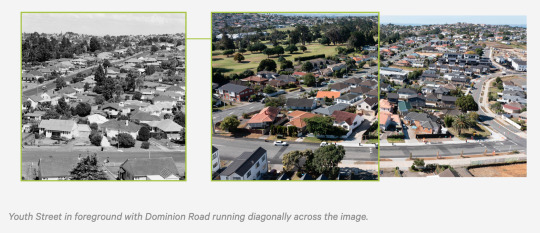

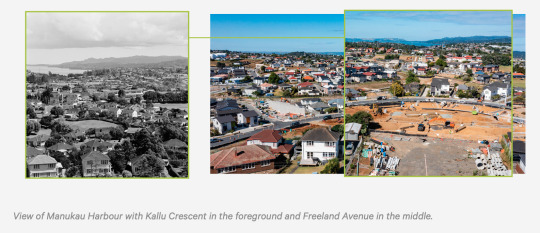
These are comparative images from the Roskill Development website (https://roskilldevelopment.co.nz)
0 notes
Text
I can only imagine how n'ice e-z floe...
Tubby in the calving throes
breaking free and clear
shepherding, milking, and honing
rambunctious as bovine bris
versus being stymied courtesy
cow - wordly bull aiming writer's block
for drought of creativity.
Asper this instance,
when a dearth of ideas
like a charred bait oven
finds me (a Brahms man) looking Bach
at drawing board and/or the clock
as if inspiration
can be found teasing out
whimsical child like spontaneity
recalling hickory dickory dock
rather than exacerbate
mental paralysis, akin
to an invisible vice grip,
which tension eventually
far worse than bill
lee esse ness, which former
grips with irony my chin,
I try release -
singsong restraint and chill,
ready to whip out power drill
not surprised finding sawdust,
viz of course after numbing skull
sticking head in deep freeze
or mounting temple
on dry ice, without
receiving nary a cavil
lack of creative noggin fill
intense concentration
invariably heats up "thinker"
as if being scalded,
skewered, sussed out
on a barbecue grill,
(which fixed attention),
never ever engenders
positive flow of ideas,
but absolutely ideal
for reducing a molehill
from a mountain dew,
nevertheless within ma mind,
before long prolonged
cessation to brainstorm induces ill
humor succumbing into
torturous mental state
(fall of the cider
house rules usher),
non poe whet
tick dark age,
whar ah felt jill
ted loom min hated
with panic ready to kill...
mice elf (cue Stuart Little),
cuz dem lil
cerebral cogs and wheels
malfunction for more'n a mill
yen times prompting
to scout graveyards
for fresh corpse, and lovely bones
if results rendered nill
jet over to Doctor Frankenstein,
even if aye gotta
hightail to Trans sill
vein ya, unless....
perhaps ye kind reader twill
donate yar viable gray matter tummy
(right after ya die) denny ya will
almost be him morte till!
0 notes
Photo

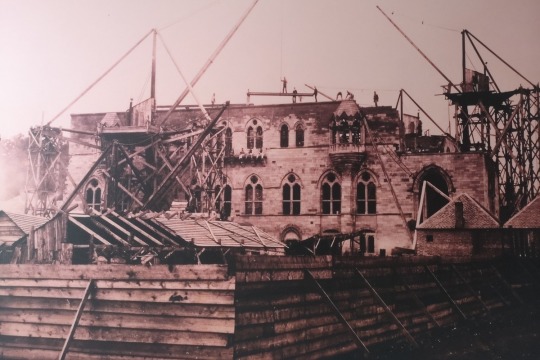
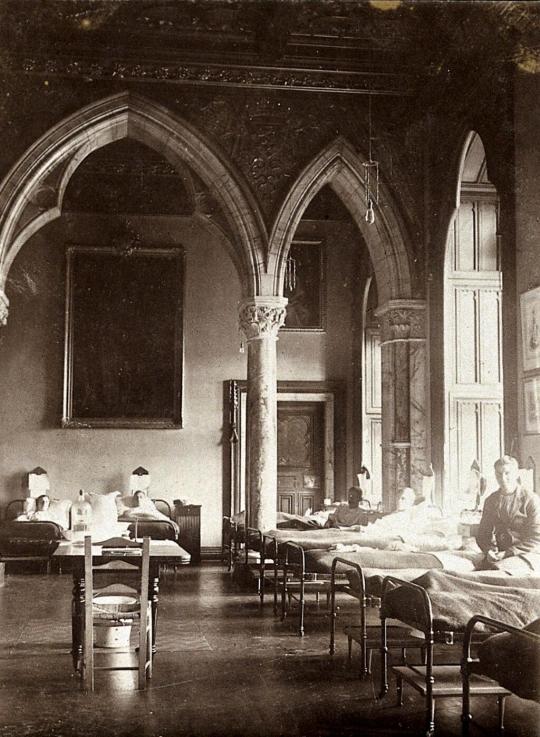
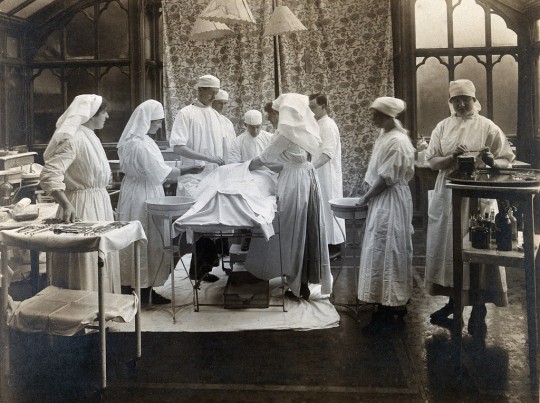


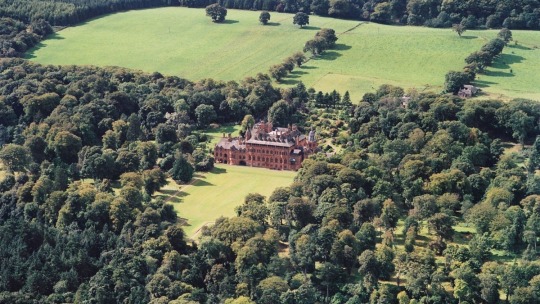


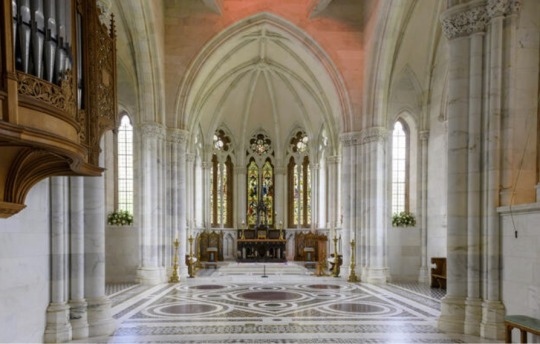
On December 3rd 1877 Mount Stuart on the Isle of Bute was badly damaged by fire.
Mount Stuart’s architectural journey is a story in itself. The original house was built from 1719, but was severely damaged by fire in 1877. Most of the contents survived, along with the Georgian wings of the building. These were retained as part of the new Mount Stuart, which the 3rd Marquess of Bute built in the late 19th century.
Wishing to bring the house up to date, the 3rd Marquess had already commissioned a significant restructure before the fire took place. Following the fire, the new build was led by Scottish architect Robert Rowand Anderson. The result was a spectacular architectural feat – a building that surpassed its predecessor in grandeur, scale, and ingenuity. A hugely impressive neo-gothic mansion . Mount Stuart was the first house in Scotland to be wired for electricity, had a lift, a heated indoor swimming pool and central heating system. All still working today!
And, with the Georgian architecture of the wings contrasting with the Victorian design, the house displayed a completely unique architectural blend.
I’m not a great fan of these stately home type properties, I have no wish to see ho the other half live, but Mount Stuart is one of the most beautiful buildings in Scotland, and we are lucky the Marquess of Bute spent the time restoring and rebuilding the place, many would have left it to rot, like so many classical buildings before and after this. No expense was spared and the result must be one of the architect’s finest creations, with the external appearance of a Venetian palace in red sandstone. The cost was astronomical for the time, said to have reached £600,000 (over £50 million today), the most expensive house built in Scotland at the time. Even more remarkably, what we see today represents only the northern wing of what was once intended. A glass-domed ballroom was planned to link this to an equally-enormous southern wing.
John Crichton-Stuart, the 4th Marquess of Bute, offered his family home, Mount Stuart House, to the Admiralty. It then became a naval hospital from 1914 to 1918. Lady Bute attended the Scottish General Hospital at Stobhill for nursing training. Patients arrived from the clearing hospital in Edinburgh and the Isle of Bute proved a suitable location for the trains from Glasgow. It also proved a peaceful Isle for the patients. As were the hospital grounds with its stunning scenery, many trees, grassed areas and gardens.
An operating theatre was set up and there was x-ray facilities. The Dining Room became a 22 bed Medical Ward as seen in the third photo below. Other rooms, like the Marble Hall, became the Middle Ward with 50 beds. There were 2060 operations which included 38 appendectomies, 14 amputations, 28 bones plated together and the removal of 2 testicles. The surgeon was Sir William McEwen who was a pioneer of brain surgery.
2120 men were admitted to the hospital and 13 died at the house.
12 notes
·
View notes
Video
youtube
Culloden
"Culloden" Scottish Jacobite Rebellion, The 1964 Classic Docu-Drama . The Battle of Culloden was the final confrontation of the 1745 Jacobite Rising. On 16 April 1746, the Jacobite forces of Charles Edward Stuart fought loyalist troops commanded by William Augustus, Duke of Cumberland near Inverness in the Scottish Highlands. The Hanoverian victory at Culloden decisively halted the Jacobite intent to overthrow the House of Hanover and restore the House of Stuart to the British throne; Charles Stuart never mounted any further attempts to challenge Hanoverian power in Great Britain. The conflict was the last pitched battle fought on British soil.
1 note
·
View note